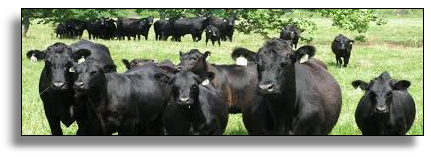

Wild Bison - Threats to Montana Ranching?
But some perceive public wild bison as a threat to traditional cattle ranching in Northeast Montana. There have been alarming claims that “landowners will be forced to have wild bison on their properties, be forced to bear the cost of fencing bison out, or bear the costs of damages from wild bison; and that hundreds of family farms, ranches and entire communities will be eradicated”. Some claims are clear exaggerations; others demonstrate a lack of awareness of Montana law regarding management of wild bison. Opposition to wild bison has deep roots. Ranching on the eastern plains goes back to homesteading in the 1800’s. It provides a rare lifestyle opportunity preferred by some – based on isolation, self-reliance, outdoor exertion, and a sometimes fierce defense of family history. It is appropriate and just that such opportunities persist in the future diversity of lifestyles available to Americans. If freedom equals access to a diversity of experiences, a loss of such unique opportunities erodes freedom for future Americans. But, due to persistent economic problems in a changing world, independent family ranching has been declining on the American Great Plains since the 1930s. Small communities and local governments in ranching-dominated counties have struggled as well. The decline continues today. On the north side of the Charles M. Russell National Wildlife Refuge, Phillips County lost 9.4% of its population during 2000-2015. Adjacent Valley County fared better, but lost 1.3%. Bison restoration should not be a scapegoat for this longstanding trend. Moreover, restoring wild bison has great potential to provide new local and regional economic opportunities and benefits (scholarworks.umt.edu/itrr_pubs/353). Exaggerated opposition to bison should not be allowed to exclude these possibilities, especially since 16% of Phillips County citizens live below the poverty standard. Montanans place value on an enduring ranching lifestyle and have supported it in the state constitution, and in laws, policies and budgets. Pertinent here is law MCA 87-1-216 which will direct any future restoration of wild bison in the state. This law constrains bison restoration and protects private properties in several ways, including:
With this law, restoration of meaningful numbers of public wild bison is unlikely on any landscape interspersed with frequent plots of private land where wild bison are not accepted. Consequently, the area including and near the Charles M. Russell National Wildlife Refuge, with much contiguous public land, is the best location for bison restoration on the Montana Great Plains. In this area, it is envisioned that public costs for managing bison, for protecting private lands, and for compensating any unexpected damages, will be relatively small, as the number of ranches affected would be small. Further, the opportunity to raise needed funding from bison-hunting license sales is large. In 2015, there were 10,424 applications for a low quality bison hunt near Yellowstone National Park, with an expected successful draw of less than 1%. A high quality Great Plains hunt would be even more attractive. While ranches in the CMR Refuge area are protected from financial losses by MCA 87-1-216, they would also have new opportunities to participate in a developing economy based on wild bison. In particular, there will be possibilities for guiding and outfitting, or simply for a carcass retrieval and processing service, on private and public lands. Other opportunities based on tourism will also become available. |
Site designed and maintained by Kathryn QannaYahu Kern
